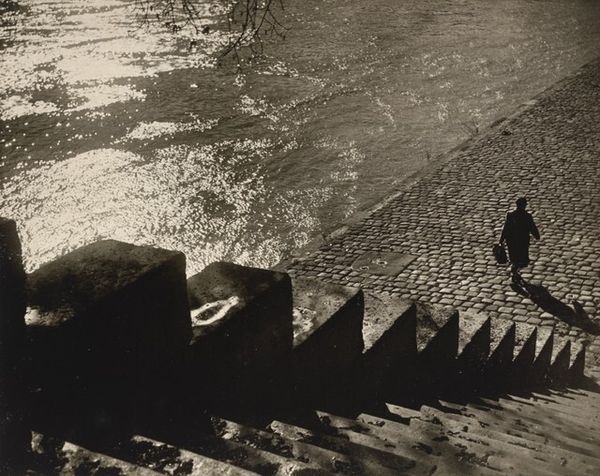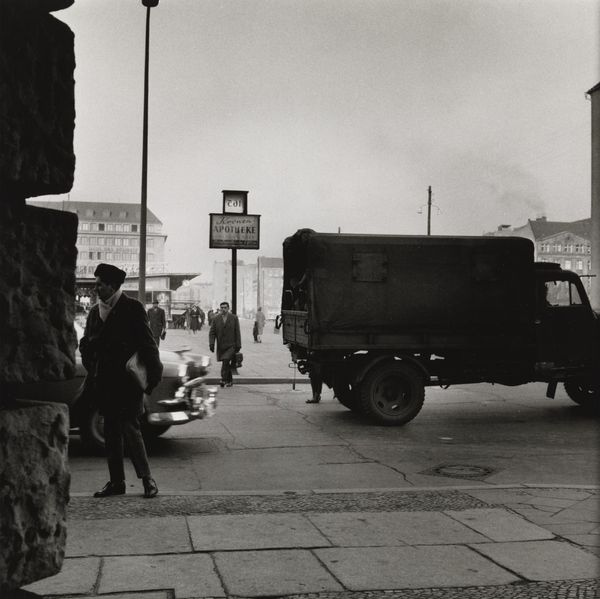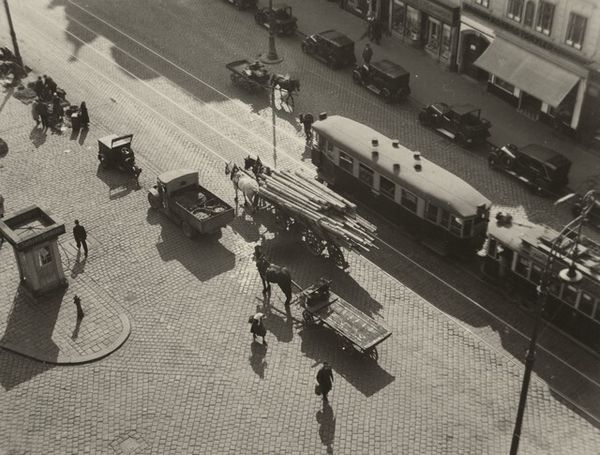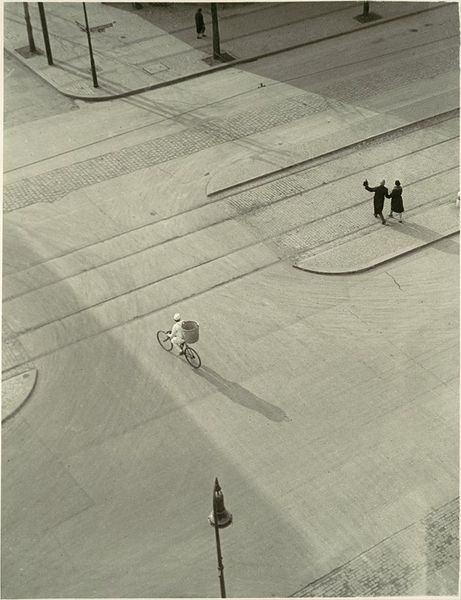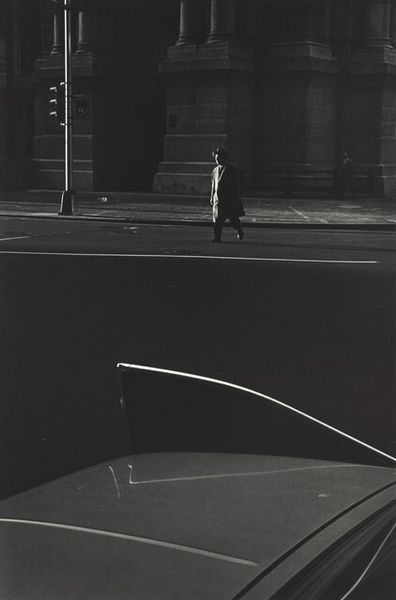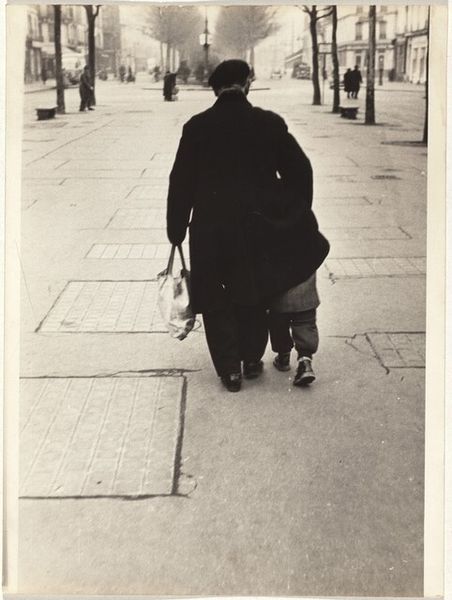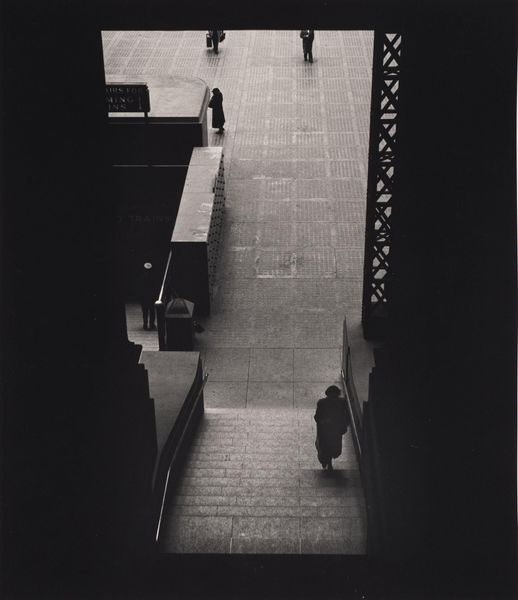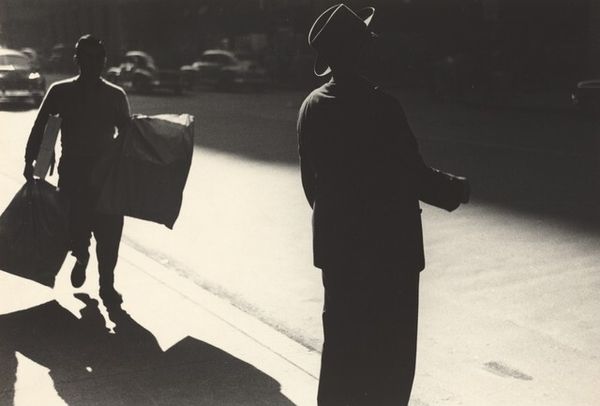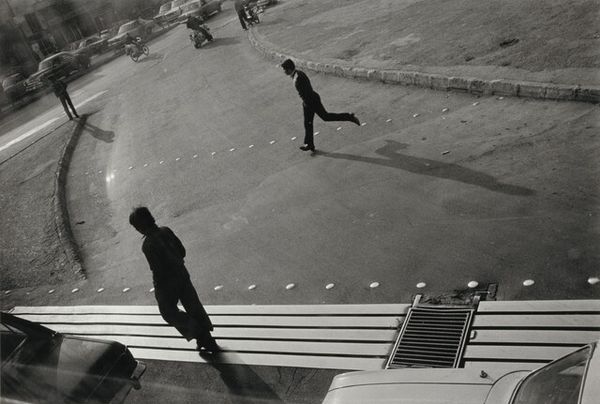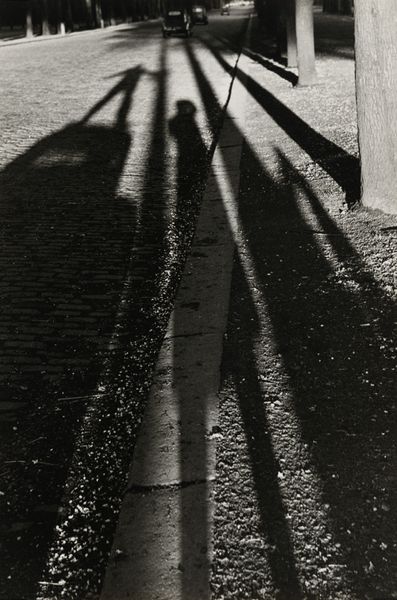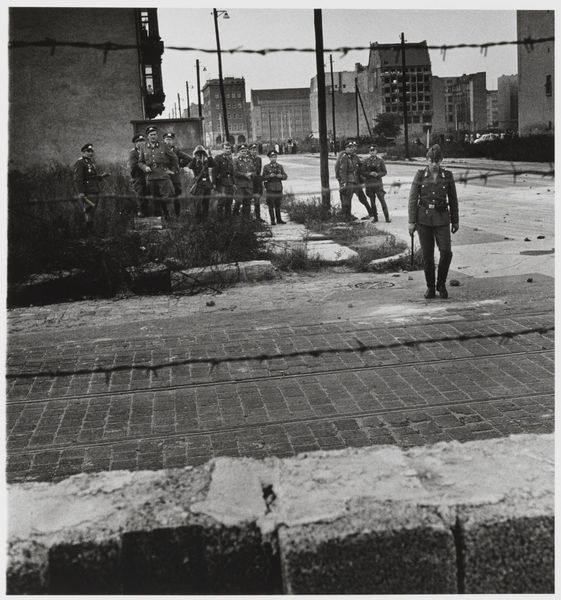
photography, gelatin-silver-print
#
landscape
#
outdoor photograph
#
outdoor photo
#
outdoor photography
#
street-photography
#
photography
#
gelatin-silver-print
#
monochrome photography
#
cityscape
#
realism
#
monochrome
Dimensions: sheet (trimmed to image): 17.8 x 12.8 cm (7 x 5 1/16 in.)
Copyright: National Gallery of Art: CC0 1.0
Editor: This is Arno Fischer’s "Berlin," a gelatin silver print from 1958. The monochrome palette and gritty texture create such a stark mood. I’m really drawn to the strong shadows bisecting the composition. What stands out to you from a formalist perspective? Curator: Note the strategic employment of light and shadow. The almost brutal contrast, rendered through the gelatin silver print, isn't merely representational. Observe how the photograph is divided. What does that separation evoke, given the title and context of a divided Berlin? Editor: It’s like the shadows create a barrier. The running child is bisected by the shadow and almost seems to be escaping the heavier darkness. Curator: Precisely. And consider the structural role of the architectural forms—the signpost, the industrial tower, the cobblestone street. These elements provide a skeletal framework. The composition is more than representational. What is communicated is the artist’s visual intervention by framing these components in this relationship with each other. Does this relationship communicate balance, tension, or dissonance? Editor: It feels unresolved… like a frozen moment in a much larger, ongoing narrative of division. It feels unsettlingly balanced, as though the fleeting hope embodied by the running figure must coexist with the bleakness. Curator: Indeed, and in such works the aesthetic experience surpasses mere description; it necessitates visual and intellectual engagement. Editor: I appreciate that emphasis on engaging directly with the visual components. It offers a language to articulate my reaction, to ground interpretation in what I see. Curator: An awareness of the materiality enriches our viewing. Every brushstroke or, in this instance, every chemical reaction of the printing process bears significance to the narrative. It allows one to see the history not as a story, but an encounter.
Comments
No comments
Be the first to comment and join the conversation on the ultimate creative platform.

